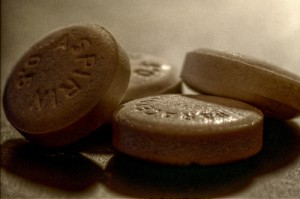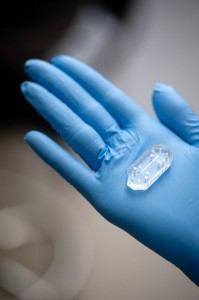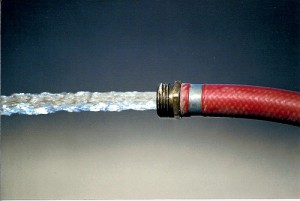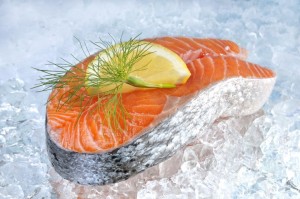Tumor cells need the right environment in order to spread. But a protein that some tumors themselves produce can make some environments inhospitable to metastasis. (Albh/Wikimedia Commons)
With cancer, it’s generally not the primary tumor that kills people, but metastasis—the spread of cancer to locations far from the original tumor.
Finding ways of stopping metastasis has proven immensely challenging. On some level, it’s a problem with the models that we use to study metastatic cancer. But it’s also a matter of understanding why particular tumor types spread where they do—like prostate tumors to the bones or breast cancer to the brain—and what about the microenvironment—the combination of cells, proteins and other factors—makes different sites in the body metastatically friendly to different tumors.
Randolph Watnick, PhD, and his research team in Boston Children’s Vascular Biology Program have been asking this question, and in the process have found that a protein called prosaposin can make sites unfriendly to metastasis. Interestingly, it’s a protein that some tumors actually make themselves.
But even better, Watnick has found that a tiny fragment of prosaposin—a peptide that is a mere five amino acids long—has the same anti-metastatic power of the full protein, making it highly attractive for drug development. He and his collaborators reported the full story in a recent paper in the journal Cancer Discovery.
Full story »

Just like Goldilocks wouldn’t eat porridge that was too hot or too cold, blood vessels won't grow properly in tissues that are too stiff or too loose. (Project Gutenberg/Wikimedia Commons)
In the tale
Goldilocks and the Three Bears, Goldilocks tries all of the bears’ porridge, chairs and beds, finding that only the little bear’s things were just right. Everything else was a little off for her…too hot or too cold, too hard or too soft and so on.
Similarly, for everything to work as it should in the body, things need to be just right. Blood pressure shouldn’t be too high or too low; organs can’t be too big or too small, etc.
Donald Ingber, MD, PhD, and his lab in Boston Children’s Vascular Biology Program take this “just right” approach when thinking about how organs and tissues are structured. Recently, he and a member of his research staff, Akiko Mammoto, MD, PhD, discovered that by changing the stiffness of the surrounding tissues—not too loose and not too tight— they could keep blood vessels from leaking. Their finding could have real consequences for people with sepsis or other diseases featuring leaky vessels. Full story »

There are a couple of ways by which aspirin might affect cancer. (cpradi/Flickr)
Aspirin does a remarkable number of things in the body, enough that it’s said it would never win approval today from the Food and Drug Administration as an over-the-counter drug.
But among those functions are some that may explain something that doctors have recognized for some time: patients with cancer who have been taking aspirin tend to have better outcomes. Full story »

It may not look like it, but it's a lung, just in chip form.
They don’t look like much sitting in your hand. A few pieces of clear plastic, each smaller than an Altoids tin, with channels visible inside and holes for plugging tubing into them.
But fill them with cells and treat those cells the right way, and they turn into something amazing: tiny hearts, lungs, guts, kidneys.
They’re “organs on chips,” and they represent what’s probably the most comprehensive effort to date to physically model the functions of whole organs for drug development and disease research.
Developed by a team of biologists and engineers led by Donald Ingber, MD, PhD, a member of Boston Children’s Hospital’s Vascular Biology Program and director of the Wyss Institute for Biologically Inspired Engineering at Harvard, they’re the building blocks for an ambitious project to create an artificial multi-organ system—essentially, a whole body on a chip. Full story »

Blood should flow through an artery like water through a hose. The stress of a blockage can encourage clots to form, potentially resulting in a heart attack or stroke. Donald Ingber thinks the same forces could be used to help dissolve clots. (Beth Kingery/Flickr)
Grab a garden hose. Put your thumb over the end, but not all the way, and turn the water on. What happens? The water coming out of the hose gets squeezed as it tries to push past your thumb, putting a lot of force on the molecules in the water and making a big spray.
Now do the same thing with an artery: Partially block it with a clot and let blood flow through it. In this case, the force you’ve created in the artery could be lethal—creating fertile ground for blood clots that could lead to a stroke or heart attack.
But what if that combination of force and pressure could be used to stop something like a stroke instead? What if it could release a clot-dissolving drug on the spot? Donald Ingber, MD, PhD, a member of Boston Children’s Hospital’s Vascular Biology Program, had wondered that for many years. To find out, Ingber, who also directs the Wyss Institute for Biologically Inspired Engineering at Harvard, had his team start with a simple question: How do clots form? Full story »
 Omega-3’s are emerging superheroes in the nutrition world. Over two decades ago, scientists noticed that Greenland Eskimos had very low rates of coronary heart disease compared to Western populations. Their secret, it turned out, was eating fish—particularly, fatty fishes like salmon that contain a lot of omega-3 fatty acids.
Omega-3’s are emerging superheroes in the nutrition world. Over two decades ago, scientists noticed that Greenland Eskimos had very low rates of coronary heart disease compared to Western populations. Their secret, it turned out, was eating fish—particularly, fatty fishes like salmon that contain a lot of omega-3 fatty acids.
An avalanche of studies have since demonstrated the cardiovascular health benefits of omega-3 fatty acids, also found in flax seeds and walnuts, as well as suggesting benefits in combating depression, rheumatoid arthritis and some types of cancer, and in boosting cognitive function.
And now comes more evidence that they can prevent blindness. Full story »











